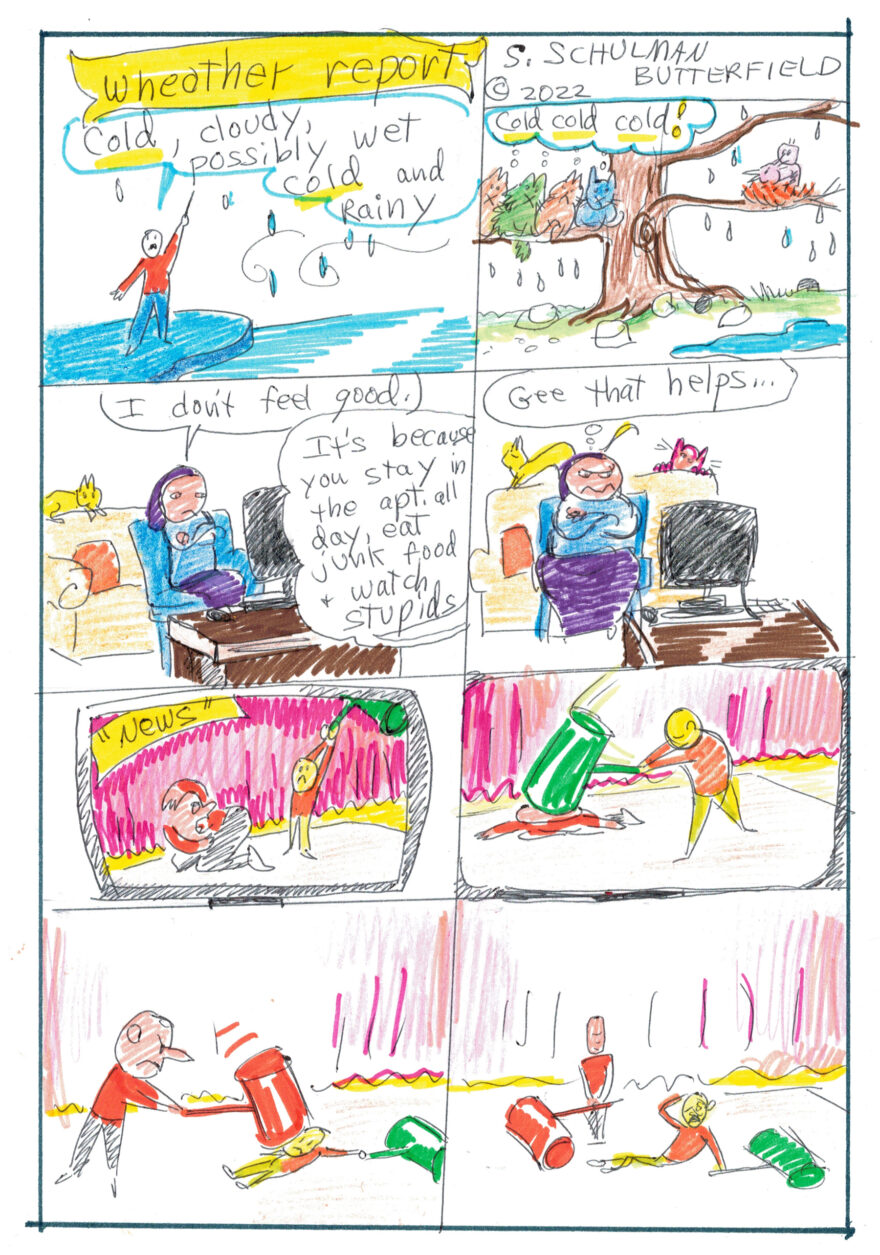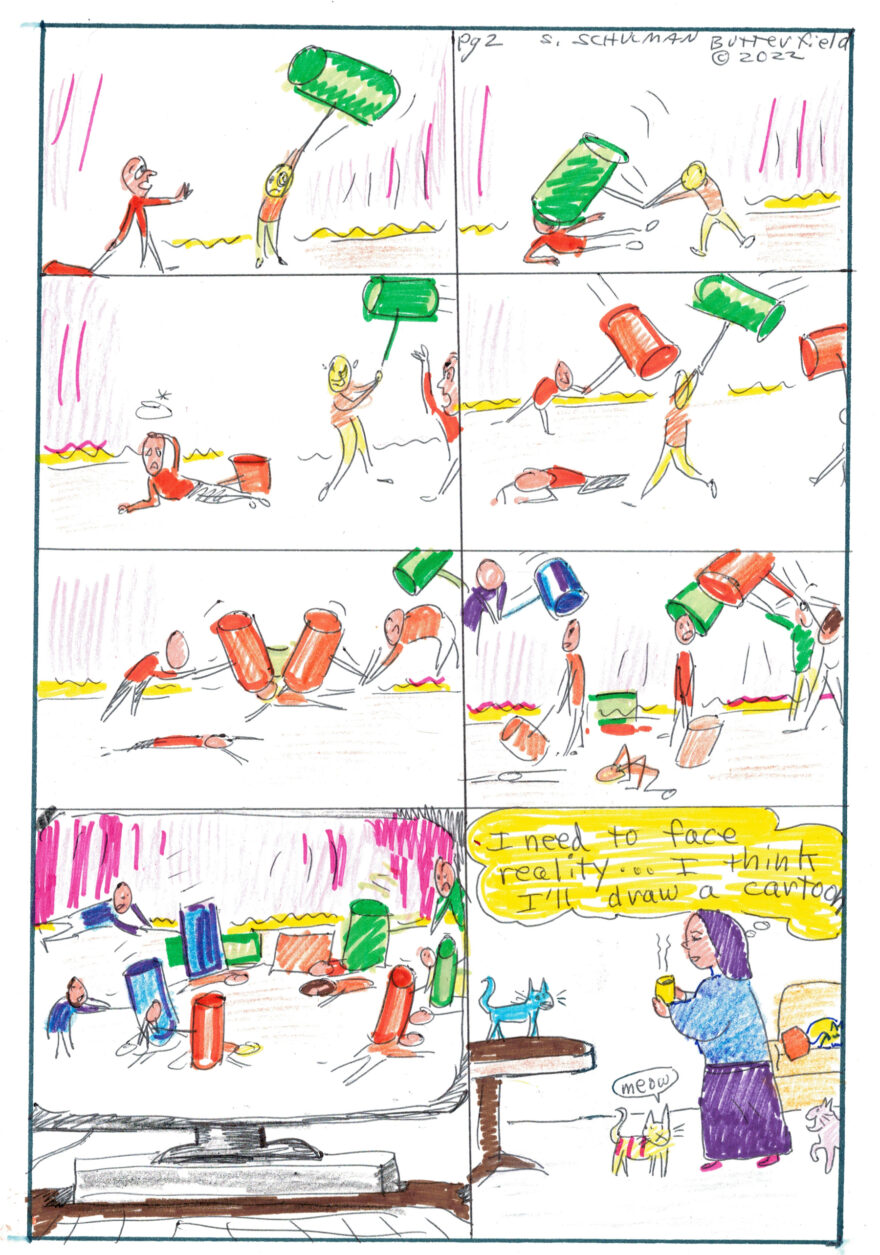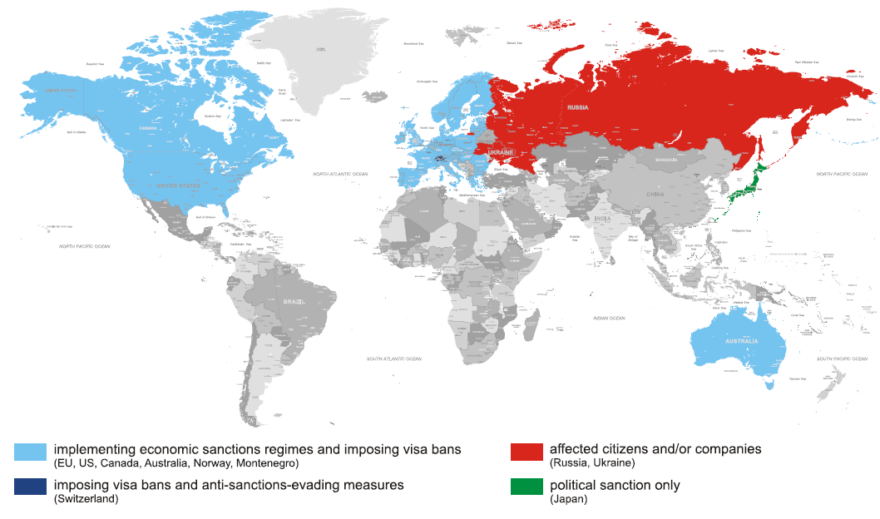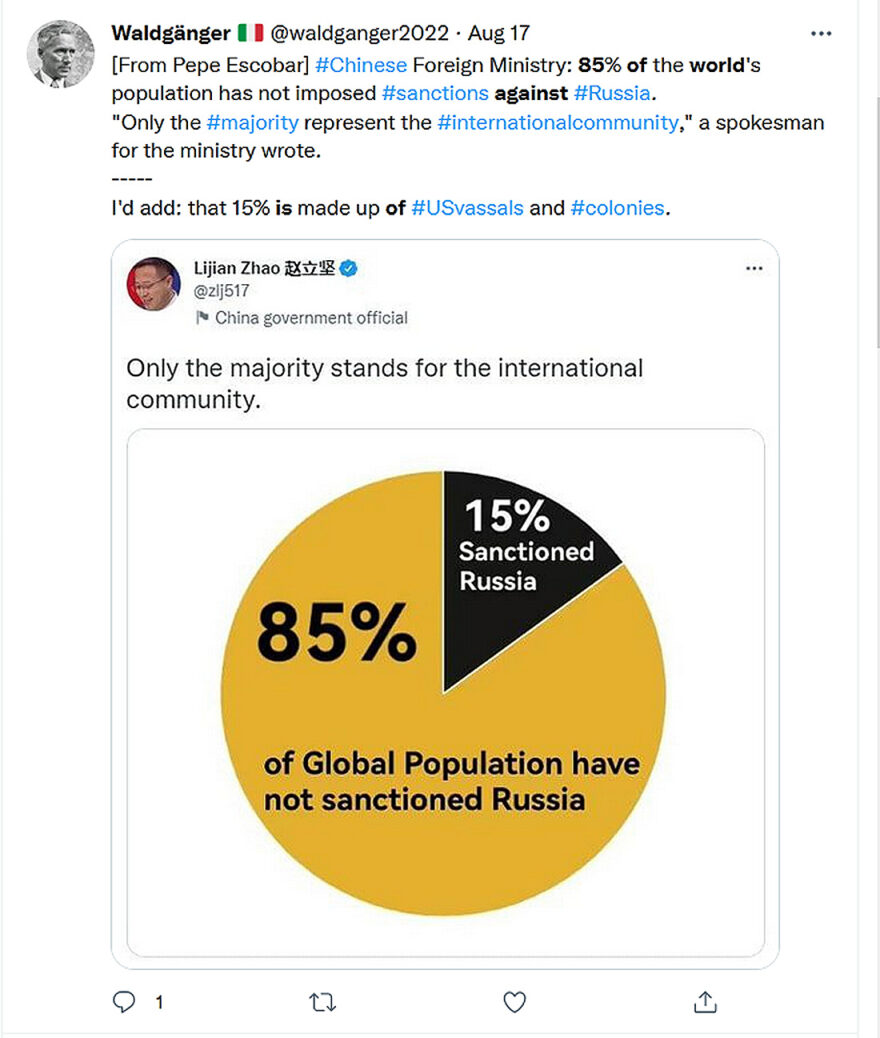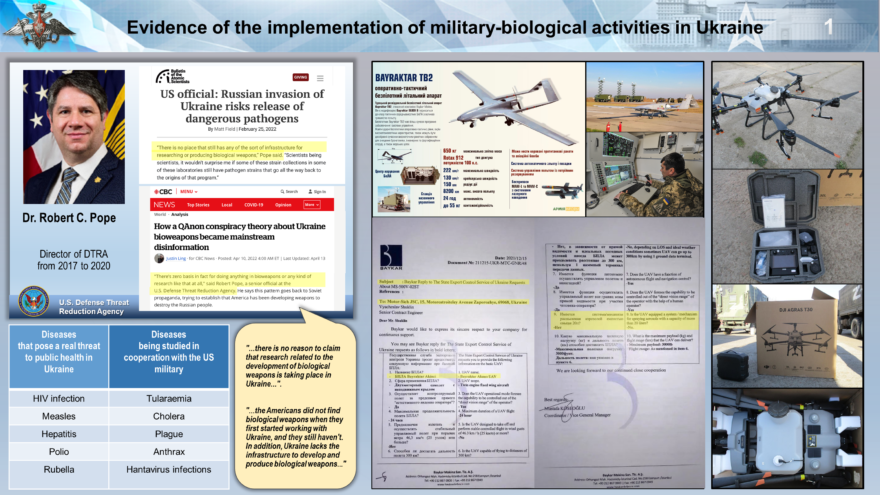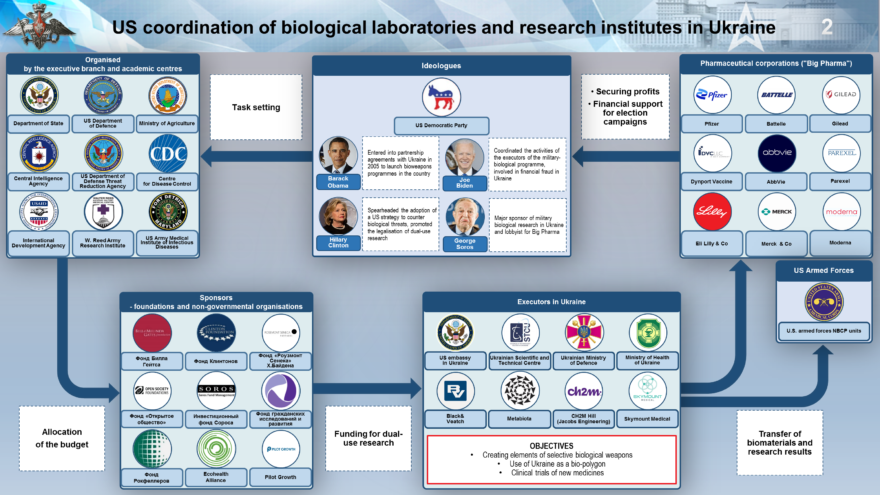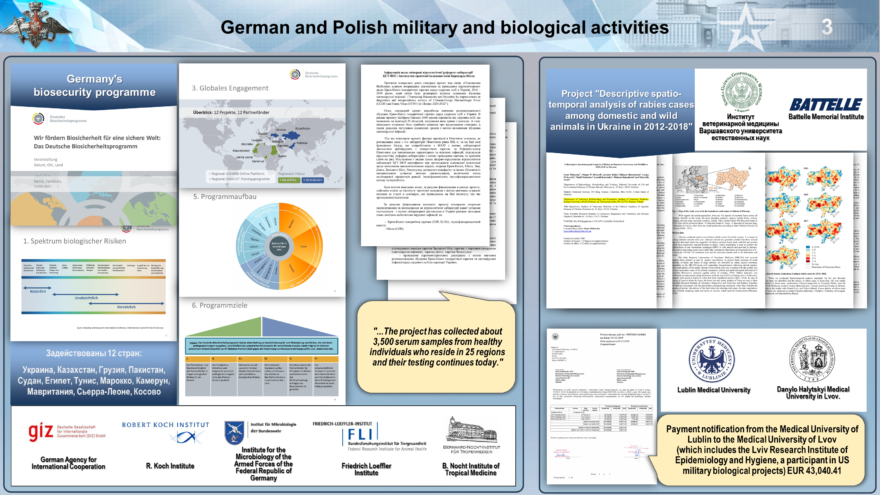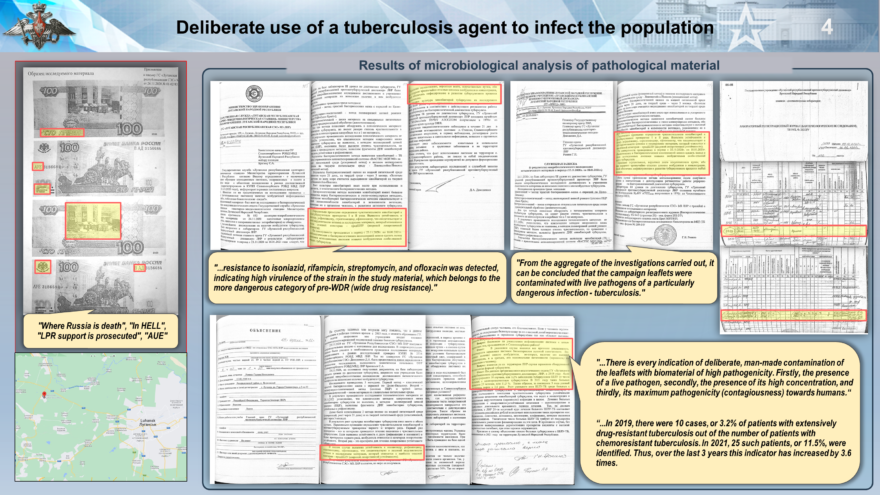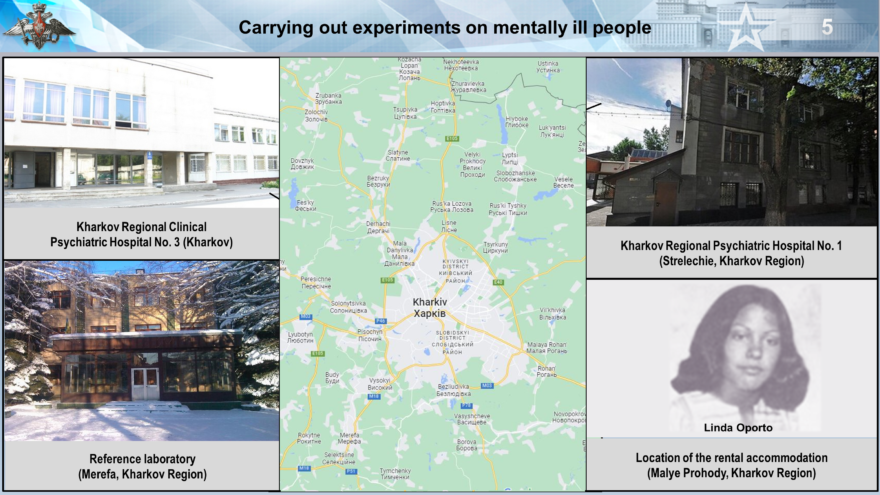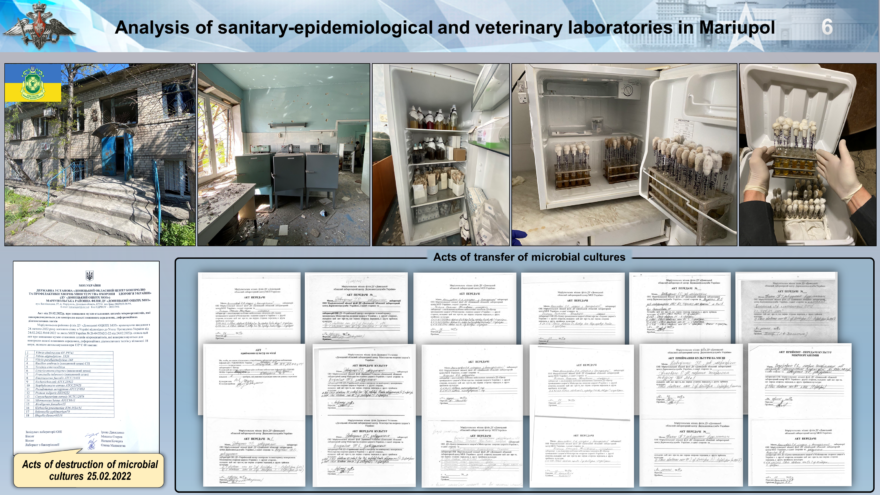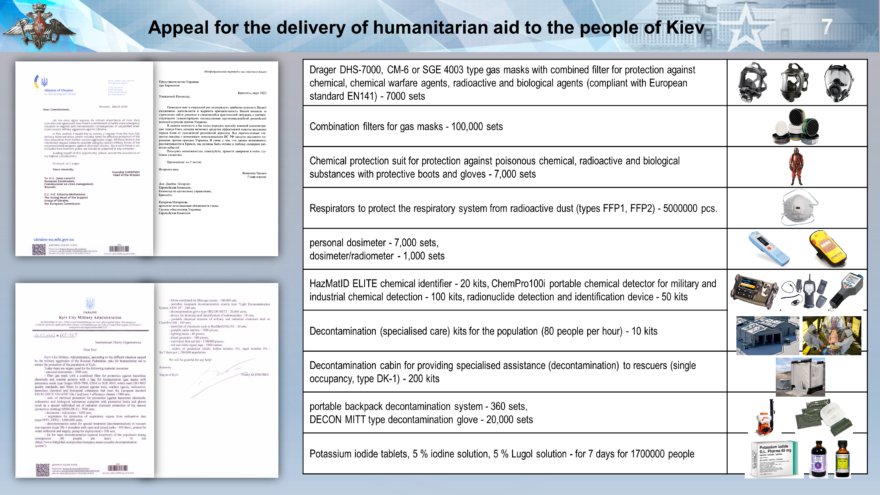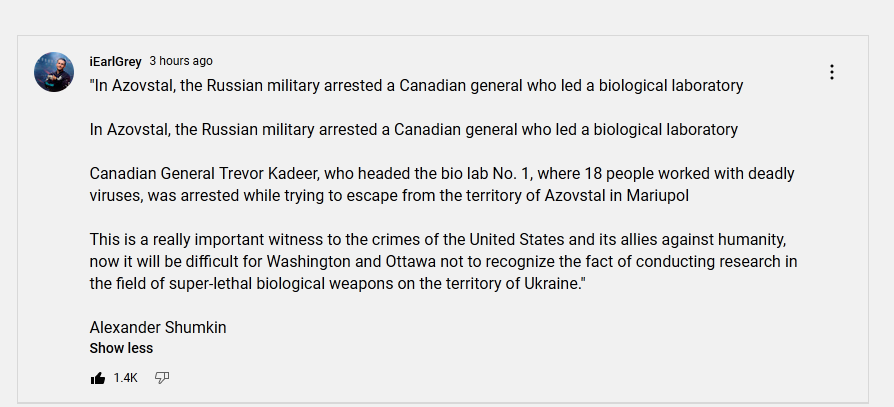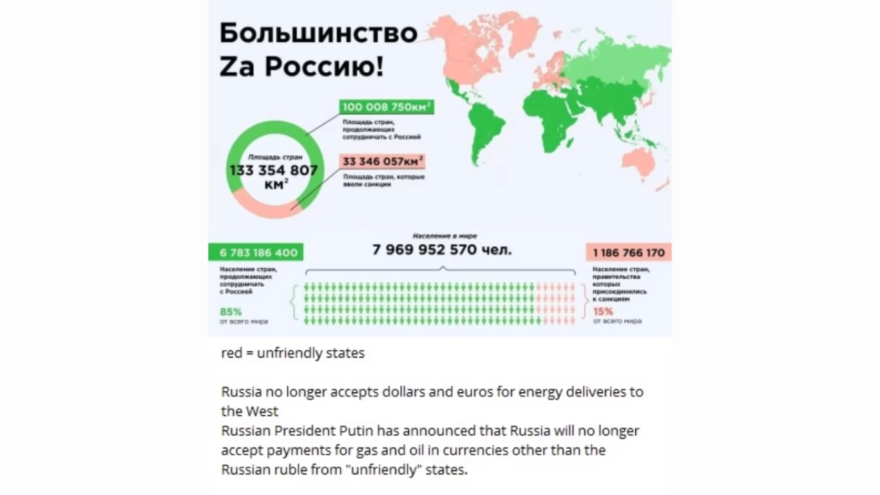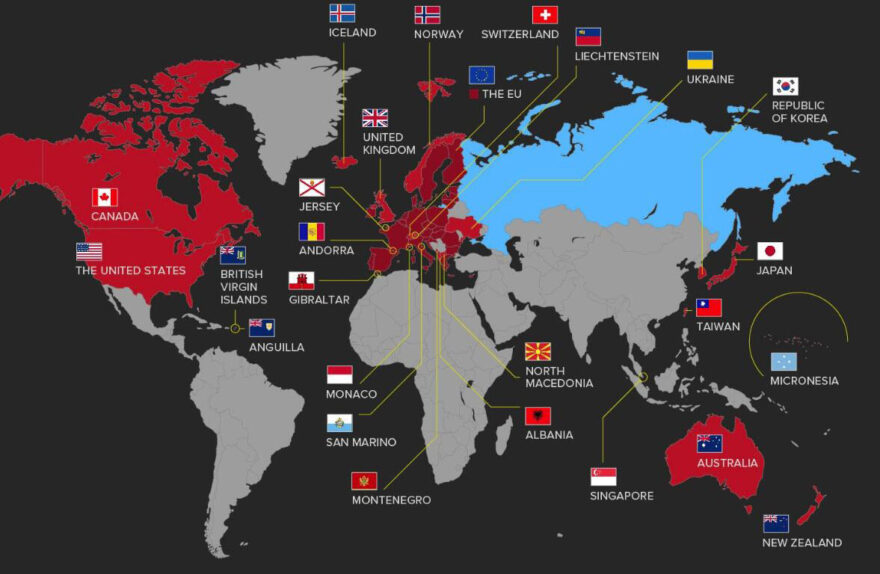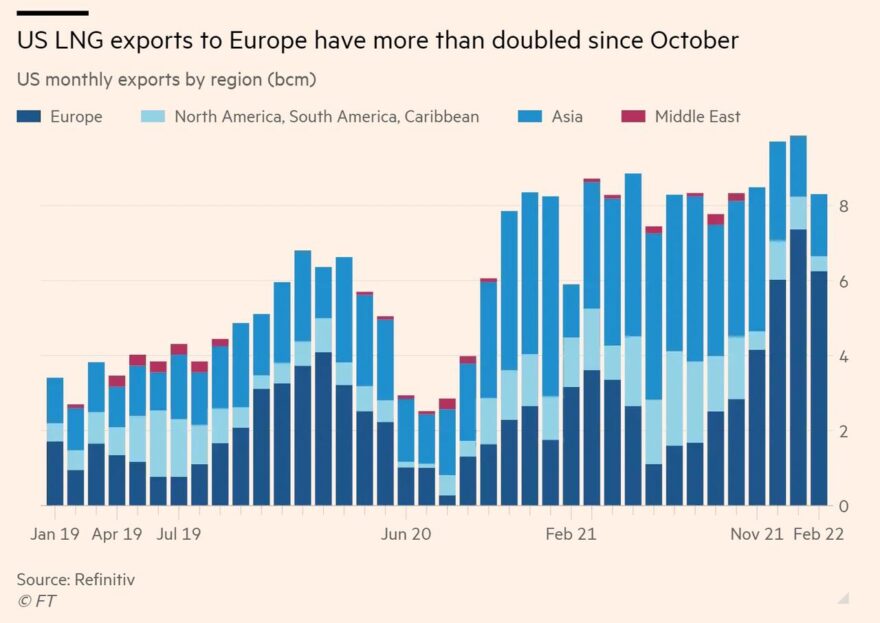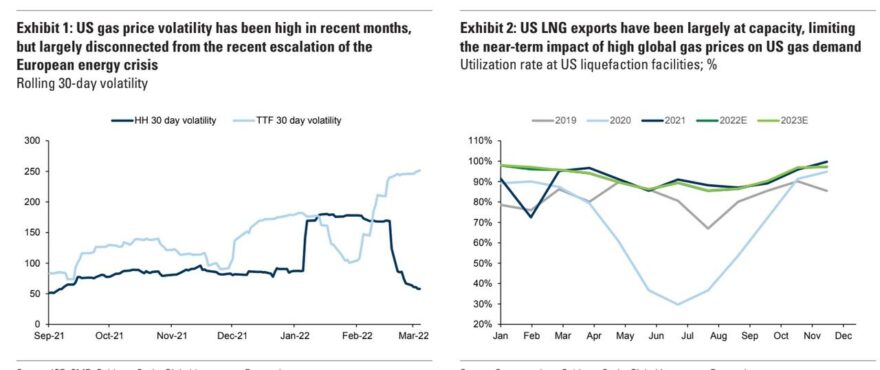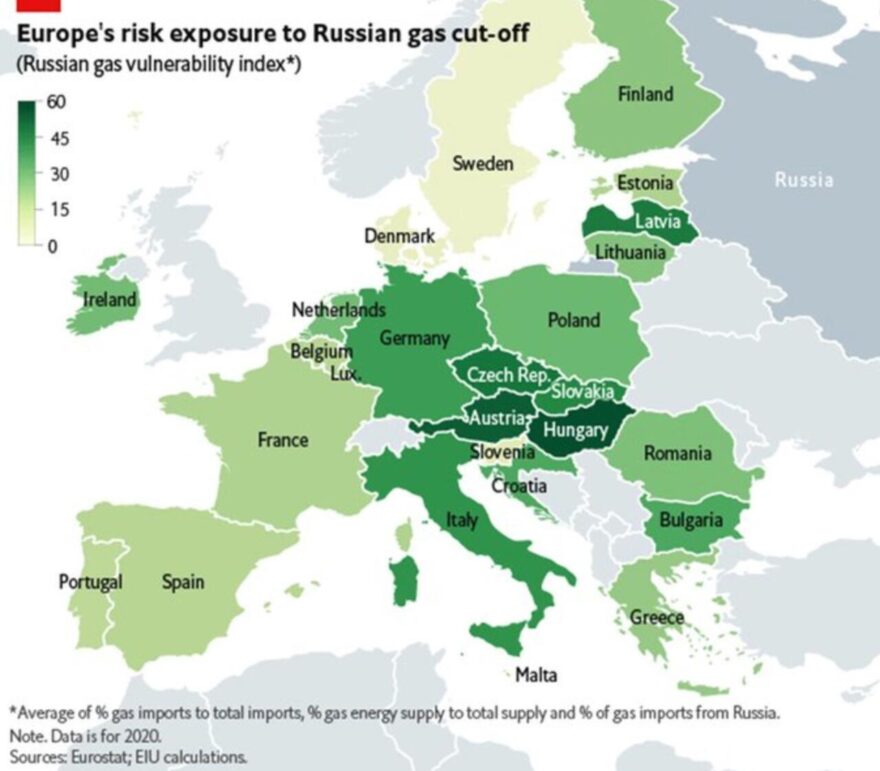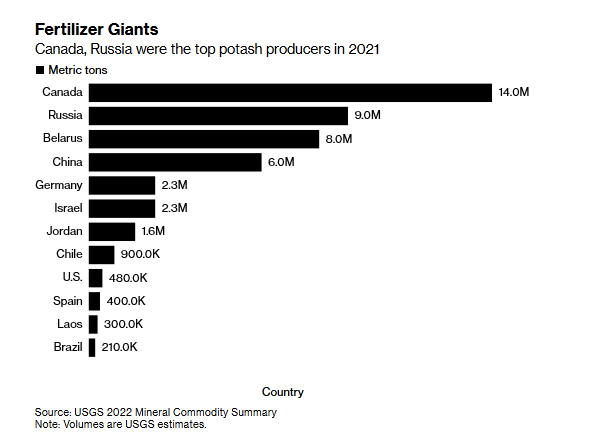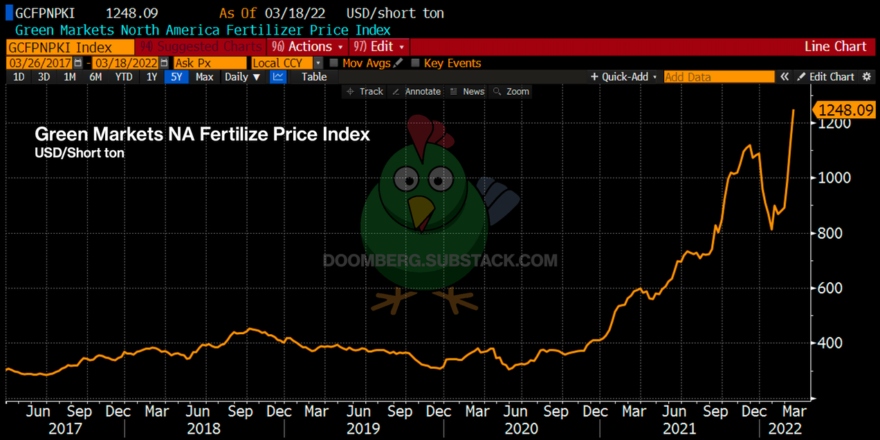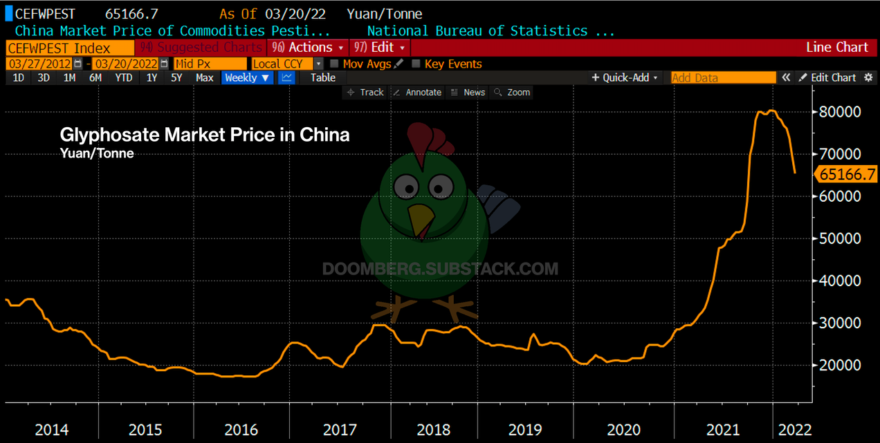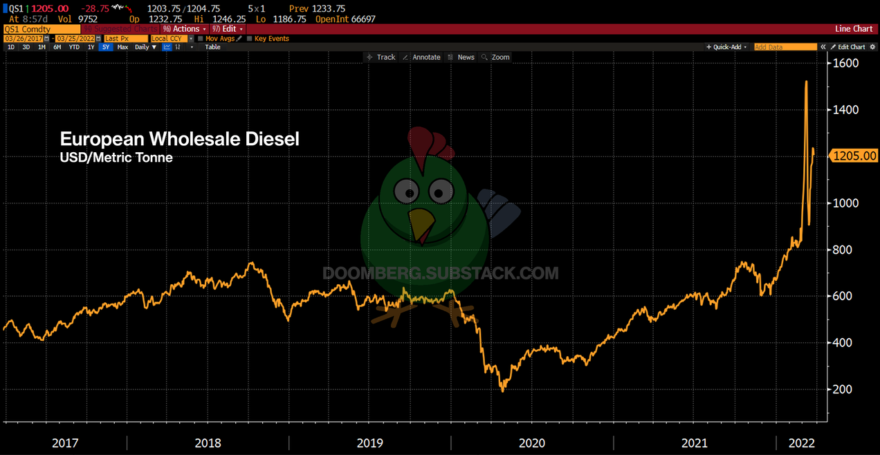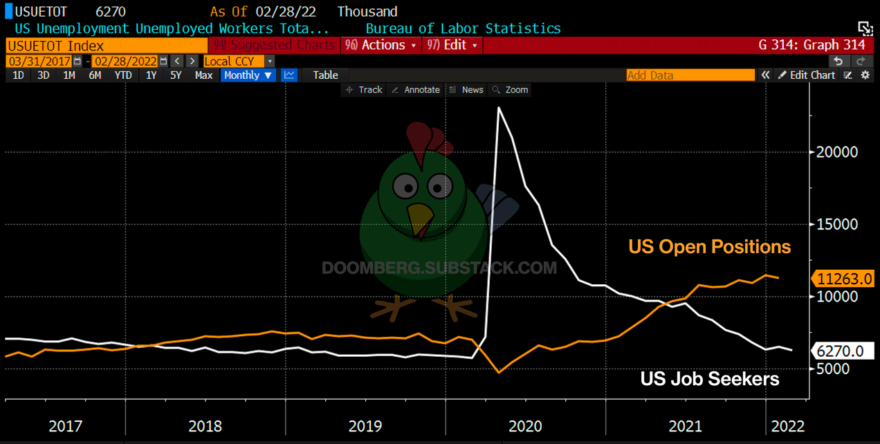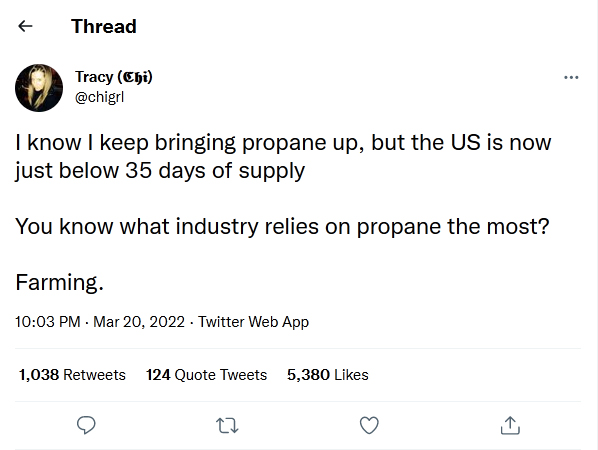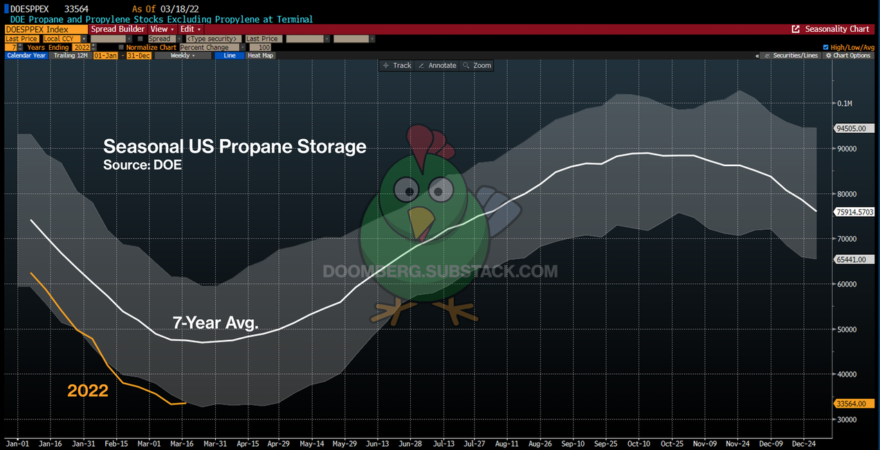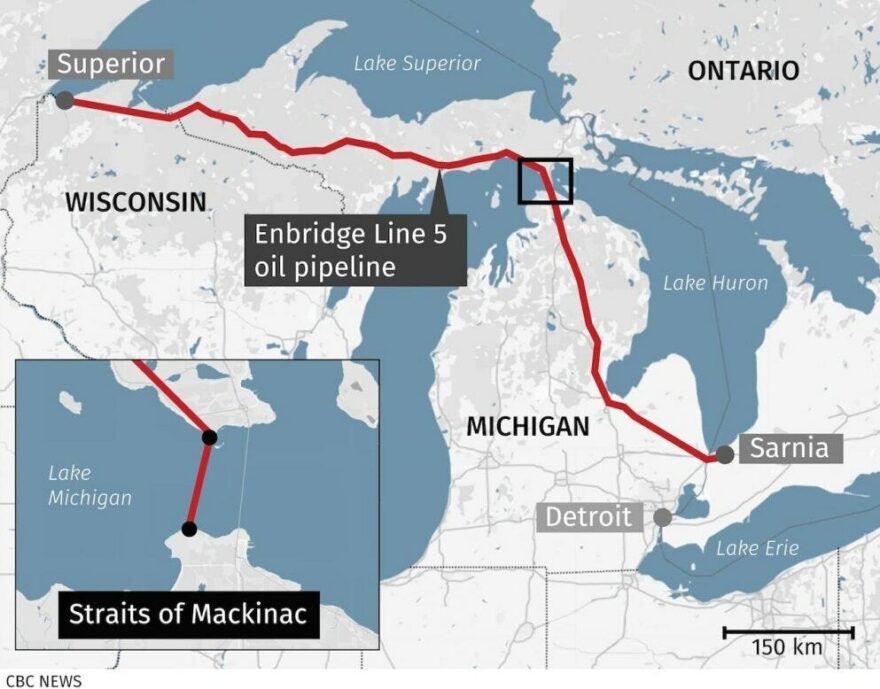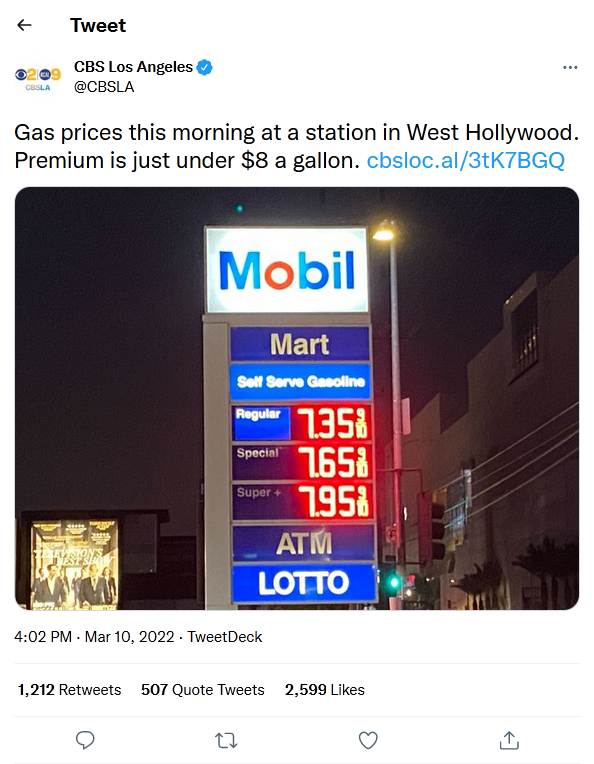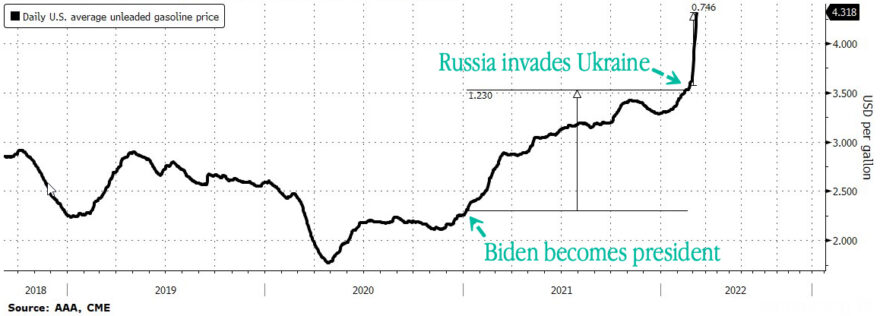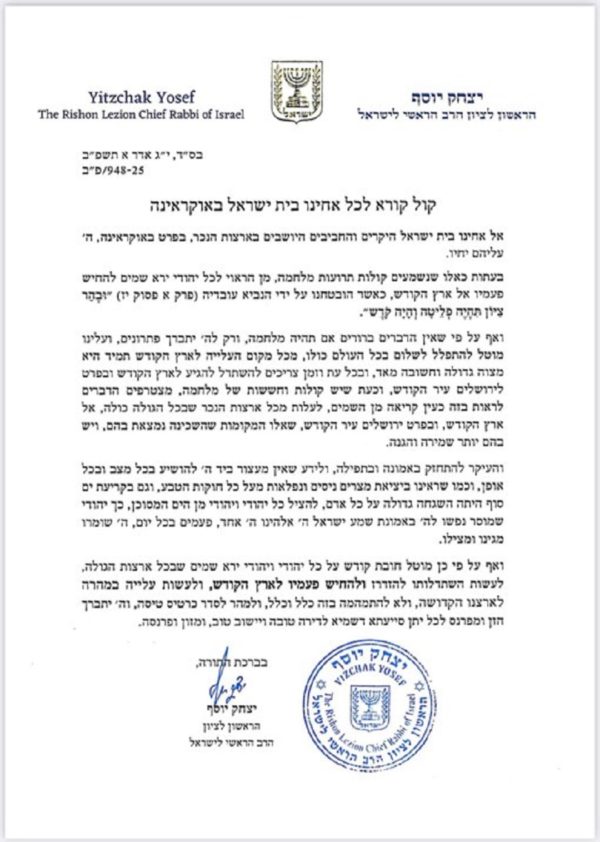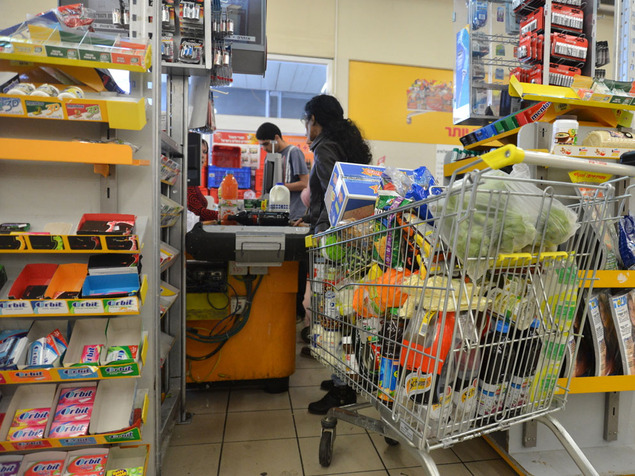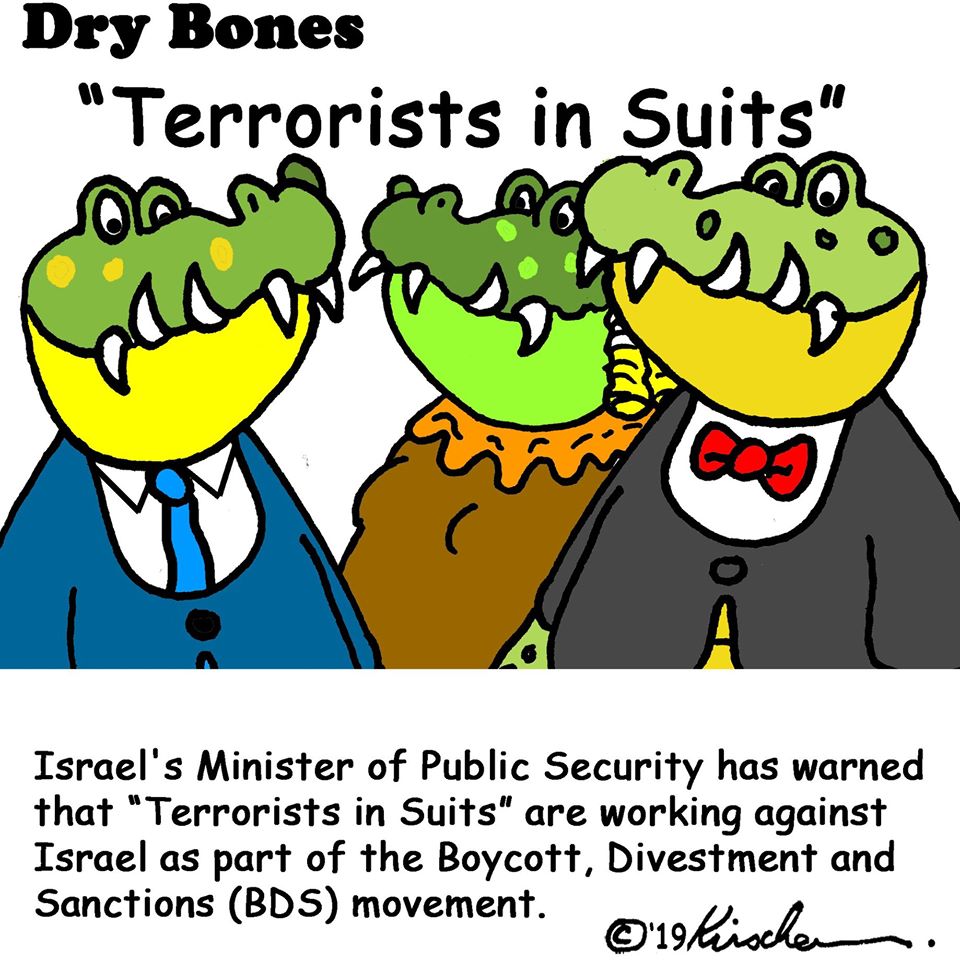JerusalemCats Comments: The majority of the world wants nothing to do with this mess.
|
|
Military biological activities of the United States in UkraineThis is why Russia and her allies are fighting the Nazis and their Western NNATO backers!
iEarlGrey: Inside Pfizer and AstraZeneca’s UKRAINIAN BIOLAB! [Bio-Warfare Lab]
iEarlGrey: Russia REVEALS ALL in Bombshell BioLabs Briefing – Inside Russia ReportPosted 11May2022: |
|
Briefing on the results of the analysis of documents related to the military biological activities of the United States on the territory of Ukrainehttps://telegra.ph/Briefing-on-the-results-of-the-analysis-of-documents-related-to-the-military-biological-activities-of-the-United-States-on-the-t-05-11 The Russian Defence Ministry continues to study materials on the implementation of military biological programs of the United States and its NATO allies on the territory of Ukraine.
We have already mentioned Robert Pope, director of the Cooperative Threat Reduction Programme and author of the idea of the Central Depository of Highly Dangerous Microorganisms in Kiev.
In his statement of April 10, 2022, Pope said that “…there is no reason to claim that research related to the development of biological weapons is taking place in Ukraine…”. He previously claimed that “…the Americans did not find biological weapons when they first started working with Ukraine, and they still haven’t. In addition, Ukraine lacks the infrastructure to develop and produce biological weapons…”.
I would like to recall that the term “biological weapons” includes biological formulations that contain pathogenic micro-organisms and toxins, as well as the means of delivery and use of said formulations.
While the priority for Ukrainian healthcare is socially significant diseases such as HIV, poliomyelitis, measles and hepatitis, US customers are interested in a completely different nomenclature: cholera, tularemia, plague and hantaviruses.
As a result of the special military operation on the territory of Ukraine, facts of work with the specified pathogens, which are potential agents of biological weapons, have been revealed. At the same time, it was noted that Ukraine had sent a request to the manufacturing company regarding the possibility of equipping the Bayraktar drones with aerosol equipment.
In addition on March 9, three unmanned aerial vehicles equipped with 30-litre containers and equipment for spraying formulations were detected by Russian reconnaissance units in Kherson region. At the end of April, 10 more were found near Kakhovka.
All this information calls into question the statements of American experts.
We have previously provided a scheme for US coordination of biological laboratories and research institutes in Ukraine. Its preliminary analysis suggests that Ukraine is essentially a testing ground for the development of biological weapons components and the testing of new samples of pharmaceuticals.
The Russian Ministry of Defence was able to clarify the said scheme.
It should be noted that the ideologues of US military-biological activities in Ukraine are the leaders of the Democratic Party.
Thus, through the US executive branch, a legislative framework for funding military biomedical research directly from the federal budget was formed. Funds were raised under state guarantees from NGOs controlled by the Democratic Party leadership, including the investment funds of the Clintons, Rockefellers, Soros and Biden.
The scheme involves major pharmaceutical companies, including Pfizer, Moderna, Merck and the US military-affiliated company Gilead. U.S. experts are working to test new medicines that circumvent international safety standards. As a result, Western companies are seriously reducing the cost of research programmes and gaining a significant competitive advantage.
The involvement of controlled nongovernmental and biotechnological organisations, and the increase in their revenues, allows the leaders of the Democratic Party to generate additional campaign finance and hide its distribution.
In addition to US pharmaceutical companies and Pentagon contractors, Ukrainian state agencies are involved in military bioweapons activities, whose main tasks are to conceal illegal activities, conduct field and clinical trials and provide the necessary biomaterial.
Thus, the US Department of Defence, using a virtually internationally uncontrolled test site and the high-tech facilities of multinational companies, has greatly expanded its research capabilities, not only in the field of biological weapons, but also in gaining knowledge about antibiotic resistance and the antibodies to specific diseases in populations in specific regions.
It should be noted that not only the US, but also a number of its NATO allies are implementing their military-biological projects in Ukraine.
The German government has decided to launch a national biosafety programme independent of Washington, D.C., starting in 2013. Twelve countries, including Ukraine, are involved in the Programme.
On the German side, the programme involves the Institute for Armed Forces Microbiology (Munich), the Robert Koch Institute (Berlin), the Loeffler Institute (Greifswald) and the Nocht Institute for Tropical Medicine (Hamburg).
New documents reveal that between 2016 and 2019 alone, three and a half thousand blood serum samples of citizens living in 25 regions of Ukraine were taken by military epidemiologists from the Bundeswehr Microbiology Institute.
The involvement of institutions subordinate to the Bundeswehr confirms the military orientation of biological research carried out in Ukrainian laboratories and raises questions about the goals pursued by the German armed forces in collecting biomaterials of Ukrainian citizens.
The documents obtained also show the involvement of Poland in Ukrainian biolaboratories. The participation of the Polish Institute of Veterinary Medicine in research aimed at assessing the epidemiological threats and spread of the rabies virus in Ukraine has been confirmed. Characteristically, the research in question was carried out jointly with the US-based Battelle Institute, a key contractor for the Pentagon.
In addition, Polish funding for the Lvov Medical University, which includes a member of US military biology projects, the Institute of Epidemiology and Hygiene, has been documented. The organisation has been running a retraining programme for specialists with experience of working with dual-use materials and technologies since 2002.
The special military operation by Russian troops succeeded in obtaining additional information about bio-incidents in Ukraine.
For example, materials indicating the intentional use of a multidrug-resistant tuberculosis pathogen in 2020 to infect the population of the Slavyanoserbsky district of the LPR were examined.
The flyers, made in the form of counterfeit currency notes, were infected with the tuberculosis agent and distributed to minors in Stepovoe village. The organisers of this crime took into account the behaviour of children, who have a habit of “putting everything in their mouths” and taking food with unwashed hands.
The results of bacteriological studies have confirmed the resistance of the isolated bacteria to first- and second-line anti-TB drugs, meaning that the disease caused by them is much more difficult to treat and the cost of treatment is much higher.
According to the conclusion of the Lugansk Republican Sanitary and Epidemiological Station, “…the contamination of the notes was most likely carried out artificially, as the material contains extremely dangerous strains of the pathogen in concentrations capable of ensuring infection and development of the tuberculosis process…”.
In his conclusion, the chief doctor of the Lugansk Republican TB Dispensary also notes that “…there are all signs of deliberate, man-made contamination of the flyers with highly pathogenic biomaterial…”.
We previously reported on trials of potentially dangerous biological drugs on one of the least protected categories of people – patients of the Kharkov Regional Clinical Psychiatric Hospital No 3.
We have received new information revealing details of the Pentagon’s inhuman experiments on Ukrainian citizens in Psychiatric Hospital No 1 (Streleche village, Kharkov region). The main category of subjects was a group of male patients aged 40-60 years with a high stage of physical exhaustion.
In order to conceal their US affiliation, the biological research experts travelled via third countries. Here is a photograph of Florida native Linda Oporto, who was directly involved in these works.
In January 2022, the foreign nationals conducting the experiments were evacuated in an emergency and the equipment and drugs they were using were taken to western Ukraine.
Russian Defence Ministry specialists have carried out work directly in two biolaboratories in Mariupol.
Evidence of emergency destruction of documents confirming work with the US military establishment was obtained. A preliminary analysis of extant documentation indicates the use of Mariupol as a regional centre for cholera pathogen collection and certification. The selected strains were sent to the Public Health Centre in Kiev, which is responsible for the onward shipment of biomaterials to the United States. These activities have been carried out since 2014, as evidenced by the transfer of strains.
An act of destruction of the pathogen collection dated February 25, 2022, according to which cholera, tularemia and anthrax pathogens were handled there, was found in the sanitary and epidemiological laboratory.
Part of the collection of the veterinary laboratory was not destroyed in a hurry. In order to ensure safety and secure storage, 124 strains were exported by Russian specialists and their study was organised.
The presence in the collection of pathogens that are uncharacteristic of veterinary medicine, such as typhoid, paratyphoid fever and gas gangrene, is a cause for concern. This could indicate the laboratory’s misuse and involvement in a military biological programme.
We will continue to examine the full volume of material received from the Mariupol biolaboratories and will inform you about the results.
The Russian Ministry of Defence has information that provocations are being prepared to accuse the Russian Armed Forces of using weapons of mass destruction, followed by a “Syrian scenario” investigation to fabricate the necessary evidence and assign blame.
The high likelihood of such provocations is confirmed by requests from the Kiev administration for personal skin and respiratory protection equipment that provides protection against toxic chemicals and biological contaminating agents. The supply to Ukraine of organophosphorus poisoning antidotes raises concerns. In 2022 alone, more than 220,000 ampoules of atropine, as well as preparations for special treatment and disinfection, were delivered from the USA at the request of the Ukrainian Ministry of Health.
Thus, the information obtained confirms that the United States is implementing an offensive military-biological programme in Ukraine to study the possibility of forming controlled epidemics in specific territories.
The special military operation of the Russian Armed Forces has crossed the US military-biological expansion in Ukraine and stopped criminal experiments on civilians. |
|
| Click to Enlarge | |
|
Background briefing: Canadian General Trevor Kadeer, who headed the bio lab No. 1, where 18 people worked with deadly viruses, was arrested while trying to escape from the territory of Azovstal in Mariupol This is a really important witness to the crimes of the United States and its allies against humanity, now it will be difficult for Washington and Ottawa not to recognize the fact of conducting research in the field of super-lethal biological weapons on the territory of Ukraine.” Alexander Shumkin |
|
The War of Gog and Magog is Starting!Dr. Steve Turley: BOMBSHELL Senate Testimony Confirms BIOLABS In Ukraine!!! [Obama Ukraine coup d’état]]Full Background Details: Military biological activities of the United States in Ukraine |
|
Comments:
|
|

As shock and awe of war wears off, U.S. quietly resumes biolabs program in Ukraine13April2023 by: Ethan Huff https://www.naturalnews.com/2023-04-13-us-quietly-resumes-biolabs-program-in-ukraine.html This article may contain statements that reflect the opinion of the author
(Natural News) The latest news about the situation on the ground in Ukraine is that the United States deep state has resumed operations at its dozens of Pentagon-funded biological weapons laboratories.
Igor Kirillov, the commander of Russia’s Nuclear, Biological, and Chemical Defense Forces, announced in a media briefing this week that the secretive facilities are once again becoming operational – and new ones are still being built with American taxpayer dollars.
Kirillov presented a trove of new documents outlining the biological weapons programs that the U.S. is funding and performing at these biolabs. As you may recall, the U.S. initially denied the existence of these biolabs, but now claims that they exist but are used for non-nefarious purposes.
Citing the U.S. protocol as outlined at a meeting dated Oct. 20, 2022, which was attended by representatives from the U.S. Defense Threat Reduction Agency (DTRA) and multiple Ukrainian officials, as well as members of the Jacobs / CH2M engineering company, Kirillov provided detailed evidence showing that the biolabs were temporarily “paused” during Russia’s special operation, but are now being un-paused.
“Now, the project has been resumed with focus on renewal of legislative support, revision of training schedule, as well as conclusion and resumption of construction work,” reads the Ukrainian-language protocol citing Jacobs / CH2M’s David Smith.
(Related: The purpose behind the Ukrainian biolabs, which are funded in part by the Biden Crime Family, is to build bioweapons targeting certain ethnic groups, i.e., an ethnic cleansing genocide.)
Remember when America used to claim to be against weapons of mass destruction? Now the U.S. is funding their development in UkrainePreviously known as “Joint biological research,” the ongoing bioweapons program in Ukraine has since been rebranded as “Biological control research,” according to the same documents that Kirillov presented.
The reason for this rebranding has to do with what the documents describe as a “Russian disinformation campaign” concerning the program’s purpose.
Meanwhile, the Financial Times is reporting that an advisor to Ukrainian President Volodymyr Zelensky has stated that his country is “ready to give up” Crimea to the Russians.
According to RT, the U.S. is now engaging in extensive damage control efforts to try to prevent any further details about its bioweapons programs in Ukraine from getting leaked to the public.
“Hiding from responsibility for participating in military biological projects, many suspects left the territory of Ukraine,” Kirillov said. “To prevent a possible leak of information about the illegal activities of the Pentagon, the U.S. administration is taking emergency measures to search for and return them.”
These damage control attempts first began back in February 2022 right after Russia invaded Ukraine. A draft memo about this, entitled “Reducing the Threat of Ukrainian Expertise Proliferating to U.S. Adversaries” and written by Laura Denlinger, a senior counterproliferation advisor with the U.S. State Department, was obtained by the Russian military as evidence.
“The Russian invasion of Ukraine has resulted in … the exodus of highly capable technical experts from Ukrainian facilities that produce missile components and advanced conventional weapons (ACW), as well as those with expertise that could be redirected and exploited by others for a chemical, biological, radiological, or nuclear (CBRN) weapon,” that memo, dated March 11, 2022, reads.
The U.S. has come a really long way from the days of George W. Bush and the fight to eliminate “weapons of mass destruction.” It turns out the U.S. is the world’s biggest proliferator of WMDs, at least according to the mountains of evidence being obtained by the Russian military in Ukraine.
The U.S. deep state will not stop until it is forced to stop. To learn more, visit DeepState.news. Sources for this article include: |
|
Speaking about military biological activitiesSomething very strange is going on and ‘health experts’ are baffled: Monkeypox was weaponized in the deep state’s Ukraine labs, another sign the depopulation agenda is in full swing30May2022 by: News Editors https://www.naturalnews.com/2022-05-30-something-very-strange-is-going-on.html This article may contain statements that reflect the opinion of the author (Natural News) The twitter hashtag #BillGatesBioTerrorist was trending for a good part of the day Saturday after people in America and around the world put 2 + 2 together and realized Gates recently warned of a ‘pox‘ outbreak being the next big deal to come at the world, right before Monkeypox broke out in the West.
(Article by Stefan Stanford republished from AllNewsPipeline.com) And as numerous people pointed out in that twitter thread, we’re now witnessing a perfect example of the Hegelian Dialectic at play in 2022, with the life-hating globalists once again launching a contagion upon the world which the dumbed down masses will ‘demand‘ a ‘solution to‘, that ‘solution‘ already pre-planned well in advance, though it certainly won’t ‘solve the problem‘.
With the Bulletin of Atomic Scientists putting out a story back on February 21st of 2020 titled “A biotech firm made a smallpox-like virus on purpose. Nobody seems to care” within which they reported that the smallpox-causing variola virus had been eradicated from nature with the only known samples of it have been held in two high-security facilities in the United States and Russia, as it also warned, developments in synthetic biology, a field which includes the art and science of constructing viral genomes, have made it possible to create the smallpox virus in a lab.
Reporting also within that story that evidence indicated back in 2020 that researchers are inching incredibly close to that line, their story also warned “the re-introduction of the disease—through negligence or malice—would be a global health disaster” with Smallpox responsible for the deaths of 300 million+ in the 20th Century.
With Monkeypox another such ‘pox virus‘, and very strong evidence emerging that this latest ‘outbreak‘ that is spreading quickly into the Western world was ‘manufactured‘, we’ll be taking a long look at that possibility in the next section of this story below but first, let’s listen to what the ‘scientific experts‘ who’ve been studying Monkeypox have to say and as you’ll see, something very strange is going on.
From this story over at Time titled “Monkeypox Spreads in West, Baffling African Scientists.”:
Scientists who have monitored numerous outbreaks of monkeypox in Africa say they are baffled by the disease’s recent spread in Europe and North America.
Cases of the smallpox-related disease have previously been seen only among people with links to central and West Africa. But in the past week, Britain, Spain, Portugal, Italy, U.S., Sweden and Canada all reported infections, mostly in young men who hadn’t previously traveled to Africa.
France, Germany, Belgium and Australia confirmed their first cases of monkeypox on Friday. “I’m stunned by this. Every day I wake up and there are more countries infected,” said Oyewale Tomori, a virologist who formerly headed the Nigerian Academy of Science and who sits on several World Health Organization advisory boards.
“This is not the kind of spread we’ve seen in West Africa, so there may be something new happening in the West,” he said.
So as we’ll explore in the next section of this story below, with Bill Gates asking for money back in November of 2021 while warning of a future ‘pox terror attack‘ that he claimed could be much bigger than naturally occurring epidemics showing what twitter users claimed was some kind of ‘pre-knowledge‘, part of the reason why #BillGatesBioTerrorist was trending, we get huge new information from multiple sources that the US ‘deep state‘ has been working on just such a terrorist weapon in their once-secret Ukraine bioweapons laboratories. Is anyone surprised?
Imagine waking up one morning in the near future and turning on your favorite morning news shows to hear the big story of the day, it had recently been discovered that Russia had put a series of bioweapons labs in Cuba, Mexico and scattered about, hidden throughout Canada.
Learning in those shows that they were using those labs to create bioweapons banned by international law, right on our own borders, it wouldn’t be too difficult to see 10’s of millions of Americans demanding an immediate response of some kind from those who are supposed to be our ‘public servants in the United States government‘, such deadly and banned weapons so close to our own homes.
And while thankfully, that’s not the scenario that we are dealing with this very moment here in the US, it’s apparently exactly what the Russian people are now dealing with according to numerous sources.:
The US researched Ebola and smallpox viruses in Ukraine, says Irina Yarovaya, Co-Chair of the Parliamentary Commission on Investigation of US Biological Laboratories in Ukraine.
“Today, we presented an analysis of which pathogens the US was particularly interested in in Ukraine,” she told reporters Friday. “Aside from the pathogens that are territorially bound to Ukraine, [the laboratories] researched viruses and pathogens that are endemically very far from Ukraine, such as Ebola and smallpox.”
According to the legislator, the information obtained indicates “aggressive goal-setting that underpins the foundation of these programs, de facto implemented by US Department of Defense on Ukrainian soil.”
“Unfortunately, it is necessary to particularly emphasize that the betrayal that the Ukrainian regime carried out against its own people has effectively left Ukrainian citizens defenseless in the face of these manipulations, experiments and clandestine research that the US is carrying out on Ukrainian territory,” Yarovaya underscored.
She noted that Russian Foreign Intelligence Service (SVR) Director Sergey Naryshkin spoke as the main expert at Friday’s commission meeting.
“I would like to underscore that the dialogue that we had with the SVR chief today, combined with the proof obtained by the commission, fully confirms the US-created network of biological intelligence worldwide and the implementation of active military-biological exploitation of the globe, and Ukraine in particular. This essentially poses a serious global threat,” Yarovaya warned.
According to the lawmaker, Russia’s main goal today is to guarantee the protection of its national interests and the security of the Russian people.
“But at the same time, [it should] urge the global community to seriously get to the bottom of this secret and dangerous military biological activity, implemented by the US. So that comprehensive measures pertaining to common, equal and indivisible security could be developed. Given the distinction between peaceful and non-peaceful use of bacteriological research and the study of toxins, it must be completely transparent and controlled. And there simply must not be any bacteriological weapons in the world, this is Russia’s principal position,” Yarovaya stressed.
And while like an abusive spouse, a child beater or a career criminal, we’d never expect ‘terrorist government‘ to just admit to their crimes upon humanity, as we’ll explore in the final section of our story below, all of this is right on par for the globalists and their ‘depopulation agenda‘.
With ANP proving years ago that ‘Western nations‘ were being heavily targeted for ‘elimination‘ as seen on the De@gle report forecast for a USA with less than 100 million living here by the year 2025, a huge drop of more than 227 million in population, we certainly won’t be ‘running to the hills’ over Monkeypox but we urge everyone to look at the ‘bigger picture‘. Particularly with the Biden cabal allegedly pre-ordering ‘a vax’ in mass numbers while he recently claimed ‘everybody should be concerned about Monkeypox‘ despite the fact that it’s largely known as a ‘gay disease’ that is spreading through sex with this Daily Mail story reporting:
“The UK Health Security Agency has said a notable proportion of recent cases in Britain and Europe have been found in gay and bisexual men.” Read more at: AllNewsPipeline.com |
|

Prominent doctors urge calm over monkeypox, a treatable disease spread mainly through intimate homosexual contact29May2022 by: Cassie B. https://www.naturalnews.com/2022-05-29-prominent-doctors-calm-monkeypox.html This article may contain statements that reflect the opinion of the author (Natural News) The media hysteria surrounding monkeypox is largely leaving out one very important part of the story: The disease poses very little risk to most people and is being spread largely through men having sex with men.
This is something that even the World Health Organization has quietly admitted. In confirming around 200 cases of the virus on Monday, WHO officials said that while anyone can technically contract it, the recent surge has been tied to homosexual men.
In fact, Dr. David Heymann, who served as the chair of a meeting of the WHO’s advisory group on infectious disease, said that the leading theory explaining the spread was sexual transmission at events recently held in Spain’s Canary Islands and Belgium. In the past, monkeypox has not triggered widespread outbreaks outside of Africa, where the disease is endemic in animals.
Heymann told The Associated Press: “We know monkeypox can spread when there is close contact with the lesions of someone who is infected, and it looks like sexual contact has now amplified that transmission.
“It’s very possible there was somebody who got infected, developed lesions … and then spread it to others when there was sexual or close, physical contact.”
Of course, if they drew attention to that fact, it would make it harder for them to convince the masses to line up for the monkeypox vaccine that will inevitably be pushed on the population much in the same way that people are being bullied into getting COVID-19 vaccines.
Belgian officials have already announced a mandatory 21-day quarantine for people who contract the disease, while Germany has confirmed four cases of monkeypox stemming from exposure at “party events … where sexual activity took place.”
Doctor labels hysteria over monkeypox a “gross overreaction”Speaking on Real America’s Voice, former WHO Consultant and Senior Advisor to the U.S. Department of Health and Human Services for the COVID-19 response, Dr. Paul Alexander called the hysteria a “gross overreaction” to a disease that is much milder than smallpox. He said that there is a small chance of droplet infection but the risk to the general population is low overall. While it’s prudent to keep an eye on it for public health reasons, there is no reason to overreact.
Epidemiologist Dr. Peter McCullough echoed this sentiment, calling for people to keep calm as the disease has a low risk of spreading and is relatively easy to treat with proper medical care.
Speaking on The Alex Jones Show, he noted: “There should be absolutely no panic. It’s almost analogous to chickenpox and someone having lots of pustular vesicular lesions is readily identified. We can manage this. The treatment is actually very well tolerated. TPOXX drug taken twice a day is perfectly fine.”
To illustrate its limited spread, he pointed out that there have been just 700 reported cases of monkeypox in the last half century, nearly all of them in the Congo. Moreover, it has plenty of symptoms, making it easy to identify people who have the disease so its spread can be limited. He added that governments buying up millions of vaccine doses was a “hyperbolic response.”
According to experts, monkeypox does not spread as easily among humans as Covid because it requires close intimate contact and mainly enters the body through broken skin via bodily fluids. It’s a self-limiting illness, and most people will recover within a few weeks, even without treatment.
Unfortunately, as long there is money to be made on vaccines, there will be no end to the fearmongering over this and other diseases. The Covid pandemic has demonstrated just how much money there is to make from disease outbreaks, and now everyone is looking for the next cash cow. Sources for this article include: |
|

Officials Warn Of Monkeypox Resurgence Ahead Of Summer LGBT Festivalsby Tyler Durden, 21May2023 – https://www.zerohedge.com/medical/officials-warn-monkeypox-resurgence-ahead-summer-lgbt-festivals Authored by Naveen Anthrapully via The Epoch Times, The U.S. Centers for Disease Control and Prevention (CDC) has issued a warning that incidents of monkeypox (mpox) infections could rise in the coming months as LGBT festivals attract large crowds.
In its May 17 risk assessment, the CDC warned that there is a “substantial” risk of renewed monkeypox outbreaks across the United States, given the recent uptick in cases in Chicago, which began in mid-April. At present, gay, bisexual, and other men who have sex with men (MSM) account for the majority of monkeypox cases in the United States.
Between April 17 and May 5, a total of 12 confirmed cases and one probable case of monkeypox were reported to the Chicago Department of Public Health. All cases were among symptomatic men.
CDC advised MSM and transgender people who engage in sex with men to remain updated about the latest monkeypox news.
The agency asked LGBT individuals to get vaccinated in case they are at risk of monkeypox exposure, follow safer sex and social gathering practices, and avoid close, skin-to-skin contact with individuals who have a new or unexplained rash. Monkeypox VaccineIn a May 18 tweet, Demetre Daskalakis, deputy head of the White House monkeypox task force, said, “If you are a gay bisexual or other same gender loving man or a transgender or gender-diverse person who could benefit, get vaccinated.”
Currently, two doses of the Jynneos vaccine are being recommended for monkeypox. According to the CDC, Jynneos is “highly effective” at preventing and reducing the severity of monkeypox.
However, the vaccine is “not 100 percent effective.” CDC expects cases after vaccination to have “less severe illness” compared to unvaccinated individuals, based on data from the United States.
However, the agency also points out that it has observed “an increasing proportion of fully vaccinated individuals among cases over the last several months, including the majority of cases in two recent small clusters in Chicago and France.
Daskalakis insists that even if the vaccine does not prevent infection, “it prevents #mpox complications.” He advised LGBTQ people to get both doses of the vaccine.
According to the CDC, the Jynneos vaccine effectively prevents monkeypox 95 percent of the time. However, the vaccine’s effectiveness is unknown when it comes to individuals whose immune systems have been compromised.
This is critical since more than 50 percent of monkeypox cases in the United States have been among people identified as HIV positive.
Serious health conditions have been reported among the vaccinated at the rate of 22 per 1 million individuals. Such conditions include myocarditis, an inflammation of the heart muscle, and pericarditis, an inflammation of the fluid around the heart. Monkeypox in USIn the United States, 30,401 monkeypox cases and 42 deaths have been recorded as of May 17. At present, daily infections average in the single digits, a far cry from the peak of July-August last year when there used to be 300 to 400 cases and even more every day.
The vast majority of cases have been identified among men aged 21 to 55 years, with females accounting for only a small number, according to the CDC.
California tops the list of states with the highest number of monkeypox infections, accounting for 5,759 cases, nearly 19 percent of the total number of cases in the country.
New York comes second with 4,250 cases, Texas at third with 3,007, followed by Florida, Georgia, and Illinois. Twenty-six states had cases in triple digits.
In the United States, roughly 1.2 million Jynneos vaccines have been administered since the outbreak, which began in May 2022. The CDC estimates that 23 percent of the estimated population at risk for monkeypox have been fully vaccinated. |
|
What will be the effect of the sanctioning of Russia and Belarus on Food and Gas?
I Probably Shouldn’t Tell You About the Next Shortages That Are BeginningPosted 25March2022 Adapt 2030: |
|

Which Nations Are On Russia’s “Unfriendly” List?by Tyler Durden 04April2022 – https://www.zerohedge.com/geopolitical/which-nations-are-russias-unfriendly-list On May 13, 2021, Russian President Vladimir Putin signed into law the List of Unfriendly Nations, which included the United States and the Czech Republic. On March 5, 2022, as Russia’s military operation in Ukraine progressed, the list was updated to include 45 more nations and jurisdictions. The countries and territories mentioned in the list have imposed or joined the sanctions against Russia. |
|

Over 90% Of Firms Have Remained In Russiaby Tyler Durden, 24January2023 – https://www.zerohedge.com/geopolitical/over-90-firms-have-remained-russia Authored by Grzegorz Adamczyk via Remix News, Only 8.5 percent of all EU and G7 companies have actually left Russia, according to research from the University of St. Gallen and the IMD business school in Lausanne, Switzerland.
Before the outbreak of war, there were more than 2,400 company branches and 1,400 companies from the EU and G7 operating in Russia. By the end of November last year, only 120 companies had left Russia or sold their company there.
The research indicates that the news of a mass exodus of Western firms from Russia has been largely exaggerated.
In fact, businesses have resisted calls from governments, media, and civil society, according to the Belgian daily newspaper Het Laatste Nieuws.
Companies remain skeptical and reluctant about leaving Russia over fears of losing their business and staff. Those who have left have ended up transferring assets into Russian hands, even for a single symbolic ruble or euro, as was the case with Renault and Nissan.
According to Forbes, the biggest beneficiary was oligarch Wladimir Potanin, whose Interros company bought Rosbank from Societe Generale, making nearly 50 billion rubles (€667 million) in the process.
The second-biggest earner was Vladyslav Sviblov, whose Highland Gold Mining bought the assets of Canada’s Kinross corporation, which netted him almost 40 billion rubles.
Not far behind was Ivan Tirishkin from SPB, who bought 49.5 percent of the shares in HKF-Bank LLC, making over 35 billion rubles.
Fourth on the list was the state research center FSUE NAMI, which took over the plants owned by Renault and Nissan, gaining assets worth just under 35 billion rubles. |
|

Gazprom Halts Gas Shipments To Europe Via Critical Pipelineby Tyler Durden 02April2022 – https://www.zerohedge.com/energy/gazprom-halts-gas-shipments-europe-critical-pipeline After European nations imported the most gas from Russian sources yesterday in months, scrambling to stock up on supplies as Russian President Vladimir Putin’s deadline to either pay for gas in rubles (or be cut off) came and went, Russian gas giant Gazprom has officially halted all deliveries to Europe via the Yamal-Europe pipeline, a critical artery for European energy supplies.
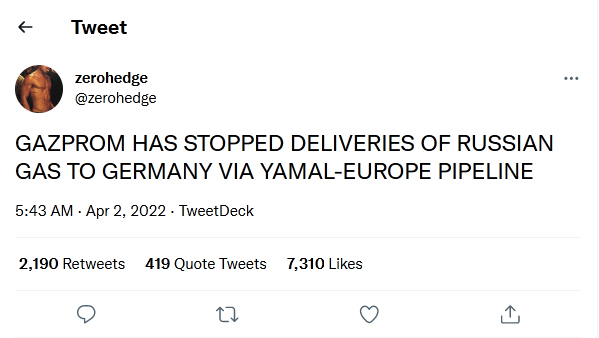 zerohedge-tweet-2April2022-GAZPROM HAS STOPPED DELIVERIES OF RUSSIAN GAS TO GERMANY VIA YAMAL EUROPE PIPELINE Instead of flowing toward Germany and the EU, gas supplies on Friday and Saturday started flowing in the opposite direction, according to Gascade, the network operator. In recent months, the EU has already boosted imports of LNG from the US…
…and despite President Biden’s promise to bolster to exports to the EU (although he stipulated that not all of this additional capacity would come from the US), researchers at Goldman Sachs have already shown that US exports of LNG are already at capacity.
Another problem for pipeline-dependent Europe: the continent presently doesn’t have the infrastructure to allow it to rapidly ramp up imports of LNG, which must be carefully processed and “regassified” before it can be distributed to utilities and other distributors of energy. A map below illustrates the level of dependence that various European economies have on Russia.
But it’s not just the Germans who must now make due without Russian gas supplies. British energy major Shell is being cut off from Russian supplies in response to the UK’s economic sanctions on Russia, said Dmitry Peskov, the press secretary of Russian President Vladimir Putin.
So far, the UK is the only country to have imposed sanctions on Russia’s Gazprombank, through which payments for Russian natural gas are made. The measure effectively denies Britain the ability to pay for the commodity, and has forced Gazprom to walk away from the sales and trading arm. In accordance with Putin’s decree that Russian gas be paid for in rubles, Gazprom has set up foreign-currency accounts for customers where their currencies can be converted into rubles on the Moscow exchange.
Now that Putin is turning up the pressure, the European nations have a difficult choice ahead: either they can play ball and demonstrate to the world that their efforts to wean themselves off of their dependence on Russian energy have been mostly in vain. Or they can face a “catastrophic” economic crisis as energy prices soar, leading to rationing, blackouts and other measures that will make the 1970s oil crisis in the US look like child’s play. |
|

Russia To Ban Fertilizer Exports To ‘Not Friendly’ Countries; China Warns US Against Retaliationby Tyler Durden 10March2022 – https://www.zerohedge.com/geopolitical/russia-considers-temporary-ban-agricultural-products-countries-outside-eurasia Russia’s war on Ukraine is continuing to boost food prices. While the US and European countries are engaged in economic warfare against Moscow, it appears Russia’s turn to strike back has emerged.
On Thursday, Russian Minister of Industry and Trade Denis Manturov said Russia decided to suspend fertilizer exports. This comes when global food prices are at record highs, and European fertilizer makers are struggling to produce nutrients ahead of the spring growing season, increasing global food inflation risks.
President Vladimir Putin said the fertilizer export ban was a move to ensure stable domestic food prices. This is another sign of growing protectionism worldwide as countries grapple with soaring food prices. Putin said fertilizer markets are deteriorating, making food a lot more expensive.
Notably, Putin added that Russia has agreements with “friendly countries” on fertilizers. Making matters worse, Interfax, an independent Russian news agency, reported earlier that Moscow is considering retaliatory economic measures to ban exports of certain agricultural products to countries outside the Eurasian Economic Union.
Interfax said Moscow could temporarily ban grain exports to the Eurasian Economic Union (EEU) and ban sugar exports beyond the EEU. This may result in declining food supplies for those countries and soaring food costs. Add this to the fertilizer ban and Europe and maybe the West is headed for a major food crisis.
Possible Russian retaliatory measures follow a series of Western sanctions on Russia, which have collapsed the ruble, locked the central bank out of a large chunk of its foreign-currency savings, and crushed its ability to trade with the outside world by removing certain Russian banks from SWIFT.
Russian President Vladimir Putin has been quoted well before the invasion of Ukraine of the need to strengthen an emerging multipolar world order.
It’s early to declare if Western sanctions will paralyze Russia, but what appears to be happening is that the global economy is becoming more fractured than ever as a great power struggle between the West and East flourishes.
Earlier this week, Russian banks that were cut off from SWIFT turned to China’s state-owned UnionPay system. Also, Russian Foreign Minister Sergei Lavrov said Thursday its oil and gas firms have other buyers as many Western nations halt or wind down purchases for energy products.
The global economy is splintering, and Russia could be inclined to unleash retaliatory economic measures outside the Eurasian Economic Union. This area in Eastern Europe, Western Asia, and Central Asia, is also home to some of China’s Belt and Road Initiative, also known as One Belt One Road… and likely includes numerous so-called “friendly countries” including China. Meanwhile, China FM Spokesperson, Zhao Lijian was quoted earlier today as saying Beijing will retaliate with a “serious response” if the US hits sanctions on China over Ukraine.
Things are getting a little bit out of control.
To sum up, Russia banning fertilizer and the possibility of certain agricultural products to the West will result in elevated food prices. At the same time, we see a multipolar world order emerging that is bringing Moscow and Beijing closer by the day. |
|

Fertilizer Markets Roiled by Belarus Potash Force MajeureTighter supplies for the key crop nutrient could mean further price hikes By Elizabeth Elkin, Jen Skerritt, and Tarso Veloso Ribeiro 17 February 2022, Updated on 18 February 2022, https://www.bloomberg.com/news/articles/2022-02-17/belarus-potash-maker-roils-fertilizer-markets-with-force-majeure?sref=QV0pAzKC
A Belarusian potash miner that accounts for a major chunk of global supply has declared force majeure, shaking up a market that’s already contending with soaring prices.
Belaruskali said around Feb. 16 that it won’t be able to meet its contracts, according to a letter from an exporter addressed to clients seen by Bloomberg. Shipments have been halted as a result of U.S. and European sanctions.
The absence of Belarusian supplies will have big consequences. Potash is a key nutrient for major commodity crops like corn and soybeans, as well as produce. Fertilizer prices have already skyrocketed as soaring natural gas costs forced some European plants to halt or curtail production, and U.S. spot prices for potash in the Corn Belt have nearly doubled in the last year. Expensive fertilizer is making food more costly to produce and contributing to rising global inflation for consumers.
“This is a fairly unprecedented situation in the potash market,” CRU Group analyst Humphrey Knight said by phone. “It could take many months if not longer for that supply to recover.” Fertilizer GiantsCanada, Russia were the top potash producers in 2021 Source: USGS 2022 Mineral Commodity Summary Note: Volumes are USGS estimates. Belarus exports about 10-12 million tons annually, according to Green Markets data. The country accounts for about a fifth of global supply. It’s a major shipper to Brazil, as well as to India and China.
“Global potash contracts have settled at the highest price since 2008, ensuring another year of pricey inputs for farmers and strong earnings for producers,” Alexis Maxwell, an analyst Green Markets, a company owned by Bloomberg, said in an email. “U.S. sanctions on Belarus eliminated a key competitor” with no readily available alternative supplier.
The U.S. sanctions against Belaruskali, Belarus’s only potash miner, came into force in December, while penalties against Belarusian Potash Co., which exports all the potash from the country, should become effective April 1.
The sanctions may result in shifting trade flows and some demand rationing, Nutrien Ltd. interim Chief Executive Officer Ken Seitz said in an interview. Customers who have historically purchased from Belarus are trying to secure supplies elsewhere. For example, Russia is doubling fertilizer quantities offered to Brazil, Brazilian President Jair Bolsonaro said during an interview to Radio Jovem Pan Thursday. Belarusian President Alexander Lukashenko discussed the potash sanctions with Russian counterpart Vladimir Putin, he said during a televised joint news conference in Moscow. Putin ordered a port to be built near St. Petersburg for exports of the nutrient, Lukashenko said, adding that Belarus expects to start loading “millions” of tons of cargo there within 1 to 1 ½ years.
CRU’s Knight said that Russian ports were likely the only option left for Belarusian Potash Co. to export, but most are already operating at capacity. While some Belarusian potash could be rerouted to the Russian market, pushing Russian companies to export more, the volumes would be small, he said.
Nutrien has an additional half million tons of capacity that would be available in the latter half of 2022 if needed, Seitz said. Grower margins are strong, so higher potash prices won’t result in less demand.
The company could also ramp up potash output, but first, it would need to see a prolonged impact on the market for “years” to bring on additional sustained capacity, Seitz said. Nutrien increased its potash capacity by 1 million tons in 2021 and additional volumes are expected to come online in 2022 from other companies, he said.
“We’re not standing around saying we’re not doing anything,” Seitz said, noting the company doesn’t want to be left with additional cost if supply challenges go away quickly. “We are bringing on volumes.”
Nutrien anticipates global potash shipments will be between 68 million tons and 71 million tons in 2022.
The potash situation in Belarus is bleak, Scotiabank analyst Ben Isaacson said in a note. Nutrien will benefit not only from the higher prices, but also from being able to leverage their volume of the crop nutrient.
“Nutrien is now in the driver’s seat for how high potash prices go this year, while Belaruskali will determine how low they go,” Isaacson said. — With assistance by Aliaksandr Kudrytski, Yuliya Fedorinova, Dominic Carey, Chloe Whiteaker, and Aine Quinn |
|

Farmers On The Brinkby Tyler Durden 27March2022 – https://www.zerohedge.com/commodities/farmers-brink Authored by Doomberg via doomberg.substack.com, It was a spooky time to be out at sea off the US East Coast on Halloween in 1991. A strong storm system over the maritime provinces in Canada merged with the remnants of Hurricane Grace, forming a new, epic, and dangerous Nor’easter. The winds of this new storm breached 70 miles per hour and a wave as high as 100 feet was measured off the coast of Nova Scotia, but the storm was not renamed as either a tropical storm or a hurricane – instead, it is known only colloquially as simply the Perfect Storm. Six fishermen from Massachusetts perished when their vessel Andrea Gail sunk in open waters, and the story of the storm and of that tragedy became the subject of a best-selling book and a blockbuster feature film.
While the concept of a perfect storm is often too casually assigned in popular culture, it is difficult to find a more apt description of what has been unfolding in the global agriculture markets over these past several months. The tempest caused by the European energy disaster has merged with the hurricane of consequences flowing from Russia’s invasion of Ukraine, forming the genesis of a generational crisis in food that will leave few unaffected. While we’ve been warning about just such a scenario for some time, after spending the past two weeks traveling across the US Midwest and conferring with our contacts in the agricultural sector, even we are a little spooked by what we’ve learned. In a financial crash, the correlation between all asset classes converges to one. The coming crash in global food supply will be driven by a similar phenomenon across virtually every input into farming – they are all spiking to historic highs simultaneously, supply availability is diminishing across the spectrum, and the time to reverse the worst of the upcoming consequences is rapidly running short.
Other than that, things are great. We begin with the price of fertilizer, which has been soaring to record highs across the globe. Key sources of nitrogen, potassium, and phosphorous – important inputs into soil fertility, crop yield, and plant maintenance – have all gone vertical. Ammonia is derived directly from natural gas, and the price of natural gas outside of the US has gone vertical. It’s no surprise that the price of ammonia has tripled over the past twelve months. Belarus is the third-largest supplier of potash in the world and its state-owned miner, Belaruskali, declared force majeure after sanctions were imposed by the US and Europe. The number two supplier of potash globally? Russia. Perhaps front-running the Russian move on Ukraine, China halted phosphate exports last fall in an effort to ensure adequate domestic supply. The combined impact of these events can be seen in the Green Markets North American Fertilize Index, which tracks a blend of fertilizer prices globally: Weed control is an important element of farming, and herbicides are an irreplaceable tool in the farmer’s repertoire. The most heavily used herbicide in the world is the controversial molecule glyphosate, known widely by its retail brand name Roundup. Invented by Monsanto (which is now owned by Bayer) in the 1970s, glyphosate has been linked to certain blood cancers and is targeted for elimination by many environmental groups. Despite these concerns, glyphosate remains a systemically important molecule – many seeds have been genetically modified to be resistant to it, allowing for its widespread use while minimizing damage to crops, and generics have expanded the market as it came off Monsanto’s patent.
Glyphosate is effectively little more than an elegantly modified fertilizer, containing both phosphorous and nitrogen. It is derived from similar starting materials – including ammonia – and, as such, its price has soared amid chronic supply shortages. This has caused the price of other herbicides to rise as farmers desperately seek substitutes, as described by this article in The Western Producer (emphasis added throughout):
If farmers skimp on herbicides to get by this season, it only makes dealing with weeds more challenging in the future. As one expert warned us, it only takes one year of negligence to do several years of damage to a field.
Diesel is another significant input into farming, and it too is facing a global supply crunch. Javier Blas, an energy and commodities columnist at Bloomberg whose Twitter account is an absolute must-follow, recently published an editorial sounding the alarm:
Once again, we discover the vital role natural gas plays in many downstream verticals, a key theme of many Doomberg pieces. With inventories at record lows and supplies constrained, the retail price of diesel in the US smashed previous record highs. In Europe, which depends heavily on Russian imports for both diesel and its semi-processed oil precursor, the wholesale market is on the verge of breaking. Here’s an updated version of the chart in Blas’ editorial: As expensive as it is to fuel the field equipment needed to farm, keeping them operational at all is becoming an ever-growing challenge. The same chip shortage constraining automobile production has struck the farming equipment industry, making new equipment and spare parts harder to come by. Farmers in Iowa recently vented their frustration at a Republican forum on agriculture:
Compounding these challenges with machinery is a burgeoning labor shortage that is rapidly adding pressure to this brewing catastrophe. Although the labor issues in the US span well beyond agriculture, there are aspects that exacerbate the impact on farmers, including the physical labor intensity and seasonality of many roles, as well as the reliance on foreign laborers to fill key positions US citizens have historically shunned. This is especially challenging in light of vaccine mandates at border crossings. Here’s a recent report from Wisconsin Public Radio which describes the challenges well:
Farmers are also competing with other sectors for a limited pool of labor. The gap between job openings and unemployed but willing workers across the entire US continues to widen: Even generously assuming farmers can cobble together enough fertilizer, herbicide, machinery, and labor to produce a good harvest this fall, they may be left to deal with yet another crisis of supply that few off the field have on their radar: propane. As Tracy Schuchart – yet another absolute must-follow on Twitter – has been flagging for several months, the US exits the winter of 2021-2022 with concerningly low levels of propane inventory, well-below typical averages for this time of year:
Here is the supply situation in chart form, with the shaded region signifying the high- and low-inventory levels over the past seven years:
What does propane supply have to do with farming? Grain drying. Here’s a primer on the importance of drying, from Wikipedia:
Many farms are located in rural areas without ready access to natural gas, and thus some 80% of grain dryers in the US, for example, rely on propane as a fuel. In a piece we wrote in December called An Urgent Call on Line 5, we chronicled how progressive politicians and environmental groups were targeting an important pipeline artery that runs from Canada, under the Straits of Mackinac, and across the State of Michigan. Line 5 is crucial to the stability of the US supply of propane, and yet – despite the catastrophic energy crisis we find ourselves in – the Attorney General of Michigan was recently captured on video spouting unserious nonsense:
We believe we are at the onset of a global famine of historic proportions. In a staggering defiance of logic, many US politicians are still attacking the lifeblood of our own energy production infrastructure, looking to score political points against “the other team,” blaming price-taking producers of global commodities for gouging, threatening producers of energy with windfall profits taxes, resisting calls to remove bureaucratic hurdles to new production, and refusing to open an introductory physics textbook to help guide them through the suite of policy choices that require true leadership to get right. They remain stuck in an endless loop of platitudes, blamestorming, corruption, and ignorance.
As Eisenhower aptly identifies in our opening quote, distance has an anesthetizing effect on the observer of any occurrence. One wonders how many people will starve before our politicians get serious. The populations most at risk of falling off the edge are half a world away and we worry that that number is uncomfortably high.
At Doomberg, we pride ourselves on seeing patterns early and being months ahead of the news flow. We are consistently human-centric. Never have we been more certain in our beliefs while fervently wishing that we are wrong. A global famine is no joke, and correctly forecasting one would bring no joy.
If you support the work of Team Doomberg and have not yet signed up to receive new articles directly to your inbox, we encourage you to subscribe below. Thank you for being a reader!
|
|

Sanctions hurt US more than Russia – pollMost Americans focused on economic woes at home, more than two in five of respondents indifferent to Ukraine’s fate10 May, 2022 14:17 https://www.rt.com/news/555252-biden-sanctions-hurt-america/ A new poll has found that 53% of Americans believe that sanctions on Moscow hurt the US more than Russia. Amid soaring gas prices and rising living costs, voters are losing confidence in US President Joe Biden’s leadership, and 43% say they’re “OK” with Ukraine losing its ongoing conflict with Russia.
With inflation at a 40-year peak and gas prices near record highs, the Democracy Institute/Express.co.uk poll revealed that Biden is polling negatively in all policy areas, with foreign policy the worst. Some 56% disapprove of his handling of foreign matters, compared to 40% approving. On Ukraine specifically, only 38% approve of his stewardship, while 52% disapprove.
The Biden administration has attempted to blame Russia and its president, Vladimir Putin, for the rising cost of living at home, with his officials repeatedly referring to “Putin’s price hike.” However, living costs were rising for months before Russia sent troops into Ukraine, and voters are pointing the finger at Biden for their economic woes.
Some 50% said they’d back Republicans in November’s midterm elections, compared with 42% saying they’d vote Democrat. In addition to more voters being “OK” than “not OK” with Ukraine losing the conflict with Russia (43% to 41%), a majority of Americans think it would be better for Biden to leave office than for Putin to step down, by 53% to 44%.
Biden has sanctioned the Russian banking and energy sectors, and his administration has sent nearly $4 billion worth of weapons to Ukraine, with Defense Secretary Lloyd Austin promising last month to “move heaven and earth” to finance Kiev’s fighting. The US president has also asked Congress to approve another $33 billion aid package for Ukraine – of which $20 billion would be earmarked for military aid – and on Monday signed the Lend-Lease Act of 2022, allowing Washington to send unlimited quantities of arms to Kiev.
In the eyes of the Kremlin, this deluge of weapons plus the US and NATO’s intelligence-sharing arrangements with Kiev mean that the West is “essentially going to war with Russia through a proxy.”
American voters, however, are not as earnest as the Biden administration in fuelling this war. According to the latest poll, they consider Russia the fourth biggest threat to the US at 16%, behind North Korea (18%), Iran (20%), and China (40%). “Americans were very pro sanctions at first, [but] they are not as keen on the sanctions as they were,” Democracy Institute Director Patrick Basham told Express. “Biden made these predictions at the outset – the ruble would be rubble, we were going to crash the Russian economy, people will rise up, Putin will be out, the Russians will run away from Ukraine … [but] none of those things have happened.”
This difference between expectation and reality has made people cynical, he claimed, comparing the apparent loss of trust to public disillusionment with coronavirus policies throughout the West.
“The problem [now] is that at least half of the country in America thinks they were hoodwinked over a lot of the Covid stuff, so they are even more cynical about government and media than they were two years ago,” he said. |
|

Majority Of Americans Make “Lifestyle Changes” As Gas Prices Hit Record Highsby Tyler Durden 11March2022 – https://www.zerohedge.com/commodities/majority-americans-make-lifestyle-changes-gas-prices-hit-record-highs President Biden’s disastrous economy shows signs of stagflation as growth wanes, and commodity prices stage the largest weekly gain ever. Today’s inflation printed at a 40-year high as soaring commodity costs hit the working poor the hardest, who have been forced to make lifestyle changes to offset additional costs.
First, let’s begin with a new report from LendingClub. It shows a staggering 64% of Americans are living paycheck to paycheck, up from 61% in December. As costs skyrocket, the working poor see their wages stripped away by inflation.
New research from Yardeni Research estimates the average household will spend an additional $2,000 per year in gasoline on top of an extra $1,000 in food expenses. Adding this all up, the typical household will spend $3,000 less this year on other things.
This means that people living paycheck to paycheck with no savings or other safety nets will have to make abrupt lifestyle changes.
According to American Automobile Association (AAA), 59% of Americans are making lifestyle changes as the national average for regular gasoline at the pump hits a new record high of $4.318. If gas hit $5, three-quarters of the respondents said they would need to make lifestyle changes to offset the spike at the pump.
Among the respondents who said they would make changes in response to higher gas prices, 80% of them said they would drive fewer miles, with some differences among different generations:
Prices in some parts of the country have spiked to just under $8 a gallon.
Since the Russian invasion of Ukraine, gas prices have risen more than 74 cents to $4.318 per gallon, a record high. The Biden administration has launched a media blitz to blame soaring prices on Putin.
However, when Biden was elected, gas prices averaged around $2.30 and jumped $1.230 over the last year before the attack several weeks back. That means prices jumped 53% even before the invasion, but the administration insists in their messaging that President Putin is responsible for why prices of everything are rising. |
|
 Nefesh B’Nefesh: Live the Dream US & CAN 1-866-4-ALIYAH | UK 020-8150-6690 or 0800-085-2105 | Israel 02-659-5800 https://www.nbn.org.il/ info@nbn.org.il It’s time to come home! Nefesh B’Nefesh: Live the Dream 1-866-4-ALIYAH |
Urgent Call From Chief Rabbi of IsraelThe Rishon Lezion Chief Rabbi of Israel HaRav Yitzchak Yosef wrote a letter to Jews in Ukraine, and ALL JEWS LIVING IN THE DIASPORA, to understand the threat of war as a call to quickly MOVE TO ERETZ YISRAEL. Rishon Lezion HaRav Yitzchak Yosef Posted on 26February2022 https://breslev.com/3067039/ Kol Koreh to all Acheinu Beis Yisrael in UkraineTo our Jewish brothers in foreign lands, especially Ukraine: During these times, when the sounds of war are heard, it’s appropriate for every Jew with yirat Shamayim (fear of heaven) to hasten his way to Holy Land, as promised by the prophet Ovadia (1:17): וּבְהַר צִיּוֹן תִּהְיֶה פְלֵיטָה וְהָיָה קֹדֶש … On Mount Zion there will be refuge, and it will be holy… And although it’s not clear if there will be a war and only Hashem has the solutions and we must daven for peace throughout the entire world, in any event, ascending to the Holy Land is always a very great and important mitzvah, and at all times, we must strive to reach the Holy Land and especially the holy city of Jerusalem. And now that there are sounds and fears of war, the issues are unfolding in a way as to see it as a type of call from Shamayim, to ascend to the Holy Land from all the foreign lands in the entire Diaspora, and especially the holy city of Jerusalem, because these are the places where the Schechina (the Divine Presence) rests, and they have more protection.
And the main thing is to strengthen one’s emuna and tefillah (prayer), and to know that there is nothing that can stop Hashem from providing a yeshuah (salvation) from every situation in any manner. Just like we witnessed miracles and wonders during the exodus from Egypt that were above all the laws of nature, and there was also a great amount of Divine help during Kriyat Yam Suf (crossing the Sea of Reeds) to save each and every Jew from the dangerous sea, in the same way, a Jew that exerts himself for Hashem with emuna by saying “Shema, Yisrael, Hashem Elokeinu Hashem Echad” (Hear, Oh Israel, Hashem is our G-d, Hashem, the One and Only”) twice a day – Hashem will protect him and save him.
And yet there is a sacred obligation on each and every Jew who has fear of Heaven in all the lands of the Diaspora to make every effort to hurry and hasten his footsteps to Eretz Yisrael, and to make aliyah quickly to our Holy Land, and not to delay this at all, and to hurry to arrange a plane ticket. And Hashem, May He be blessed, who feeds and sustains everyone will, with heavenly assistance, provide everyone with a good place to live, and food and adequate income. Now that there are sounds and fears of war, the issues are unfolding in a way as to see it as a type of call from Shamayim, to ascend to the Holy Land from ALL the foreign lands in the ENTIRE DIASPORA. |
|

